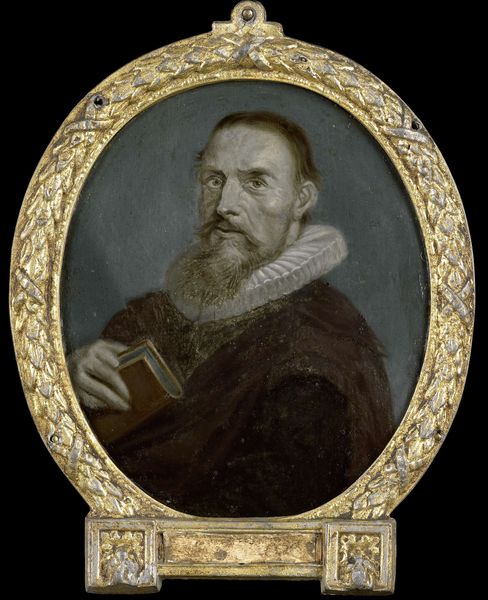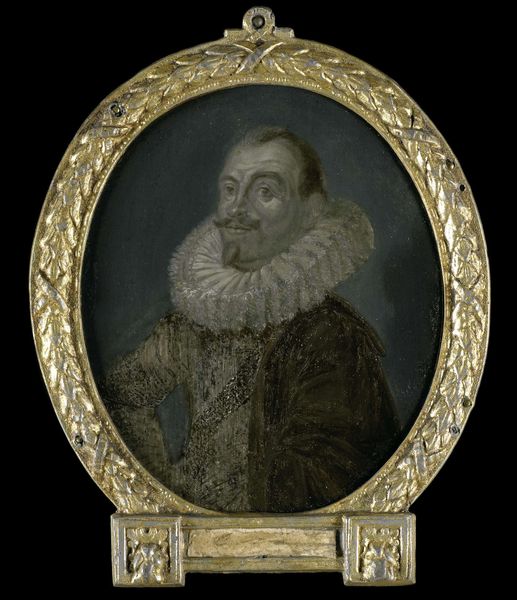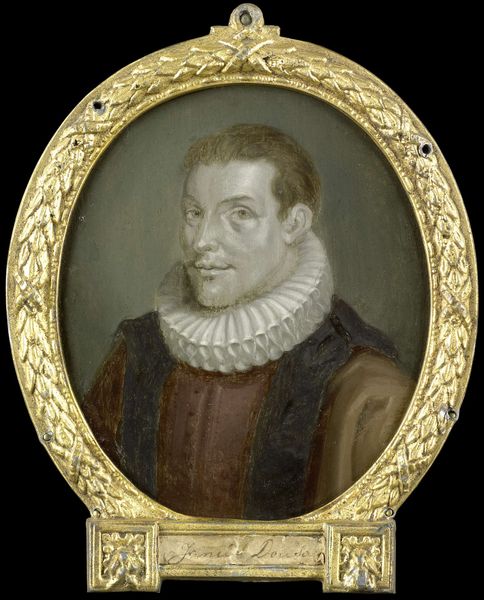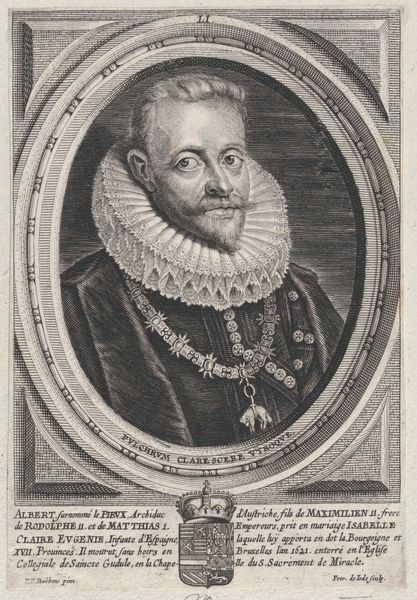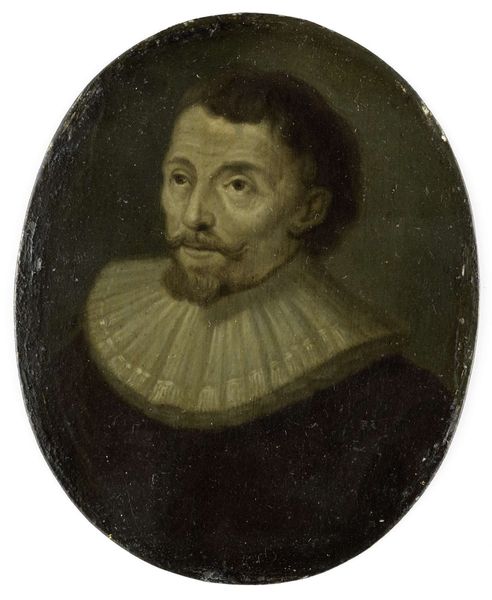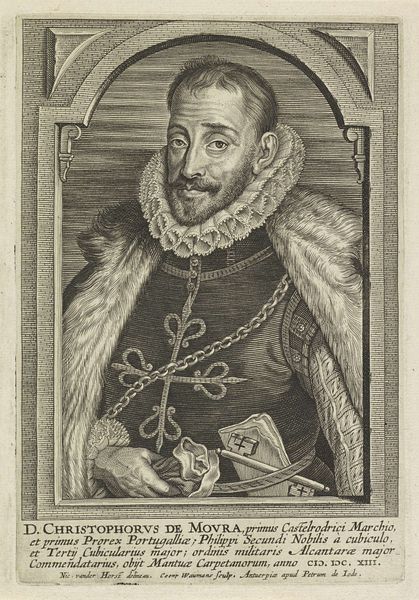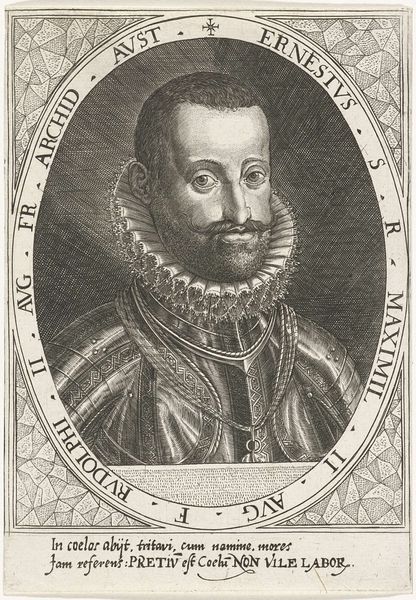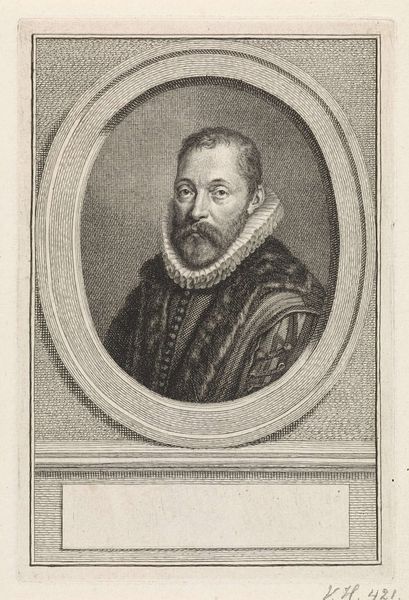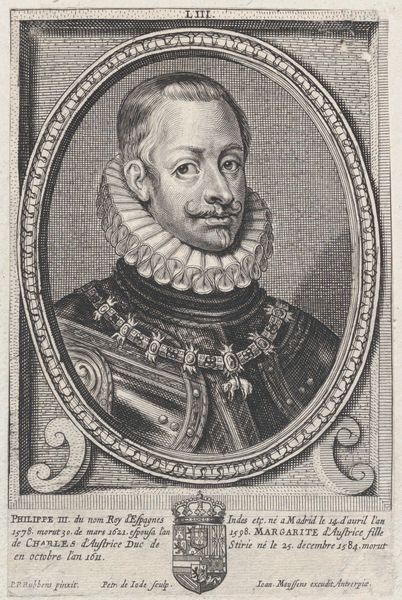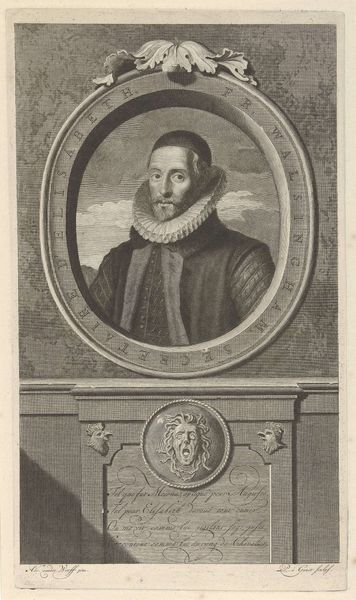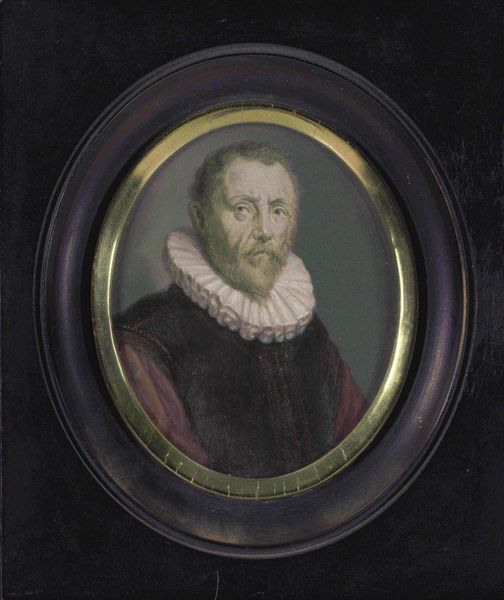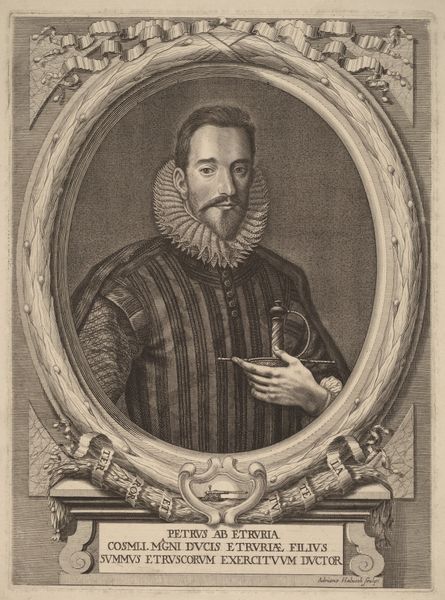
oil-paint
#
portrait
#
baroque
#
oil-paint
#
miniature
#
realism
Dimensions: height 11 cm, width 9.5 cm
Copyright: Rijks Museum: Open Domain
Editor: This miniature oil painting, "Portrait of Petrus Bertius, Professor at Leiden," made sometime between 1700 and 1732 by Arnoud van Halen, is quite striking. I'm particularly drawn to the textures, the ruffled collar against the fur. What stands out to you in this work? Curator: Indeed, the juxtaposition of textures provides a compelling visual interplay. But let us consider the composition as a whole. Note the careful balance between the figure and the oval frame, how the artist uses circular forms to guide the viewer's eye. The lighting, too, plays a crucial role in defining form. Editor: I see what you mean about the circles, especially the frame. It's very ornate and eye-catching, almost distracting. The frame contrasts a lot with the stark background. Curator: Precisely. The gold frame, replete with symbolic laurel leaves, creates a liminal space, separating the depicted sitter from our own reality while simultaneously enhancing his importance. Do you observe the limited color palette, how van Halen emphasizes browns and grays, using the white of the ruff as the focal point? Editor: Now that you mention it, I do see how strategically that white collar pops. And the reddish-brown tones unify the figure. But what about the almost photographic detail in his face? It seems so realistic. Curator: Realism is certainly an aspect of the work, yes, yet the detail also enhances the symbolic presence of the professor. Note the intricate lines used to denote the wrinkles and facial hair; consider how the artist constructs the gaze as central to our understanding of the subject. The artist isn't simply representing; he's building an idea of character through form. Editor: I see how the artist's formal decisions really construct the character and meaning, and are so vital in a portrait like this. Curator: Exactly. Examining the internal relationships reveals how artistic agency operates beyond mere representation.
Comments
No comments
Be the first to comment and join the conversation on the ultimate creative platform.
